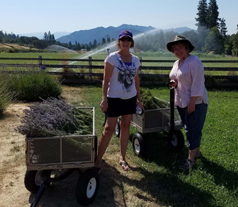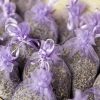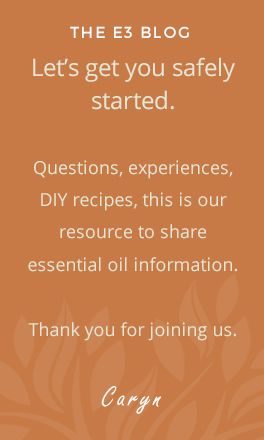No products in the cart.
Outdoor & Active Life Style, Seasonal
Lavender Plant Care Outdoors & During the Winter
By Caryn Gehlmann

I’m looking forward to teaching two Lavender Harvesting & Care classes on how to harvest and enjoy lavender! The classes will be held at Lavender Fields Forever and starting in the field, you’ll learn how to best cut and bundle fresh lavender. Back in the barn, we’ll talk about how you can start your lavender plant care outdoor now, so that next season your plants continue to be healthy and happy. Then I’ll share tips and ideas on how you can enjoy your harvested lavender buds throughout the year. (There are two classes in August so sign-up now, as space is limited.)
If you can’t make it to the class or if you want to give yourself a jumpstart, here are some basic lavender plant outdoor care tips…
When to plant lavender outdoors
The optimum time to plant and transplant lavender is from the middle of May through early summer. Avoid planting during the extremes of summer if possible. Lavender can be planted in the early fall as well.
Although established lavender plants need very little water during the summer, newly planted lavender should be kept moist during the first growing season.
Pruning & harvesting lavender
Young lavender plants should not be allowed to flower the first year. Trim flowering stalks as they arise. Some varieties will send up flowering spikes repeatedly throughout the summer so repeated snipping of the flowering stalks will be necessary. Removing the flowering stalks the first year encourages a compact and healthy form that will reward you with even more bloom for years to come.
It is recommended that you prune two leaf sets above the woody growth. This reduces stress on the plant by avoiding pruning into the woody growth which can lead to rot. Leaving two leaf sets encourages stable growth and a healthier, thicker and more compact plant. It’s best to plan an annual pruning routine to reduce maintenance and to harvest the best dried lavender bundles from your plants. This reduces random pruning and lengthy, woody growth.
Lavender plant care during the winter
Snow will insulate lavender plants only if no ice has accumulated before the snow fall. Excessive weight of snow will create a situation lavender farmers call ‘snow pack burn‘. This happens when you have several inches of snow covering your plants for longer than several days below freezing. The biggest concern is ICE! Once ice has accumulated on the branches they will begin to freeze the oil within the stem and the branch will die back.
Make sure your lavender plant is winter hardy for your zone. The best way to ensure your lavender plant survives outdoors during the winter is to plant it in a south-facing area that drains well. And, if you live in colder climes, Zone 5 or below, after the first frost and the ground is cold, you can cover your lavender plant with an evergreen bough or breathable landscape fabric (but not leaves, because they would smother your plant).
There are a variety of classes at Lavender Fields Forever to enjoy this summer. I hope to see you there! And feel free to contact me if you have any questions or join our Facebook community for more lavender tips.








